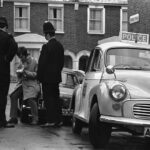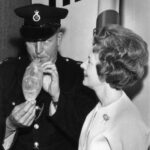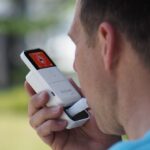DON’T DRINK AND DRIVE
The drink drive breathalyser was 50-years old recently. Police carried out the first roadside breath test on a motorist in Shropshire on October 8, 1967.
Prior to that, the criteria for prosecution were somewhat less scientific – whether you could touch your nose with your eyes shut, walk in a straight line or stand on one leg.
Back in 1967 there were 1640 road fatalities attributed to alcohol. Since then, there’s been an eight-fold reduction in the number of deaths alongside a dramatic increase in car ownership.
But 200 people a year still die in accidents where at least one driver is over the alcohol limit, according to the latest statistics from the Department for Transport (DfT).
Final figures for 2015 show a 9 per cent increase in the number of seriously injured casualties – from 1070 in 2014 to 1170 – the first rise since 2011. The total number of casualties in drink drive accidents for 2015 was 8470 – up 3 per cent on the previous year.
Police carried out over half a million (520,219) roadside breath tests in 2015, the lowest number since data collection began in 2002. More than 60,000 drivers (one in eight of those tested) failed or refused to take the test.

Two police officers administer a Breathalyser test to a driver on Finden Road in Newham, in the East End of London, 1960s. (Photo by Steve Lewis/Getty Images)
Men were twice as likely as women to fail a breath test, a trend that was consistent across all age groups according to the DfT report.
The Road Safety Act of 1967 set the maximum limit at 80mg of alcohol per 100mL of blood (0.35mg of alcohol per litre of breath). It became an offence for the first time to be in charge of a motor vehicle with a blood or breath alcohol concentration exceeding that limit.
“It seems remarkable now that the new law was greeted with outrage in some quarters, with publicans heckling the then Transport Minister, Barbara Castle, accusing her of damaging their trade,” comments Hunter Abbott, advisor to the Parliamentary Advisory Council for Transport Safety (PACTS) and Managing Director of breathalyser firm AlcoSense Laboratories.
“In the first 12 months alone, there were 1000 fewer deaths and 11,000 fewer serious injuries on the roads – proving that the use of the ‘drunkometer’ was both necessary and justified”.
The original ‘blow in the bag’ breathalyser was a relatively crude device, initially used to confirm a policeman’s suspicion that a motorist was under the influence. A subsequent blood or urine test at the police station provided the evidential proof.
The fuel cell alcohol sensor was later developed, an electronic device that transformed the process of screening by providing the police with a quick test to accurately quantify the driver’s alcohol level at the kerbside. For prosecution a second evidential test needed to take place at the station using a second, more precise method than used at the scene.
Until the Nineties this involved blood or urine testing at the station which required a doctor to be called out to take the sample. If a doctor was unavailable, sometimes a driver could escape prosecution. The process was dramatically simplified with the invention of evidential infra-red breath testing at the station, offering comparable accuracy to blood testing – removing the need for a doctor to be called out and improving the prosecution rate.

19th December 1967: Transport Minister Barbara Castle (1911 – 2002) watches Police Constable Frederick Griffiths of ‘R’ division Traffic Unit blow into a breath test kit at a press conference in London. (Photo by Harry Todd/Fox Photos/Getty Images)
“There are still more than 5000 accidents a year where at least one driver is over the alcohol limit, and nearly a fifth of drink drive convictions are the morning after the night before,” adds Hunter Abbott.
“Studies also show that if you drive while having only one-eighth of the English drink drive limit in your system (one fifth of the Scottish limit), you are 37% more likely to be involved in a fatal accident than when sober.
“The only way to tell when you’re safe to drive the morning after is either to abstain completely or to use an accurate personal breathalyser.”
The AlcoSense Excel (available from Halfords priced £99.99) features a smaller version of the sensor used by several UK Police forces, making it highly reliable, and gives detailed readings of either your blood or breath alcohol concentrations.
More from www.alcosense.co.uk ENDS.
| Print article | This entry was posted by admin on October 26, 2017 at 1:53 pm, and is filed under News. Follow any responses to this post through RSS 2.0. Both comments and pings are currently closed. |
Comments are closed.
















